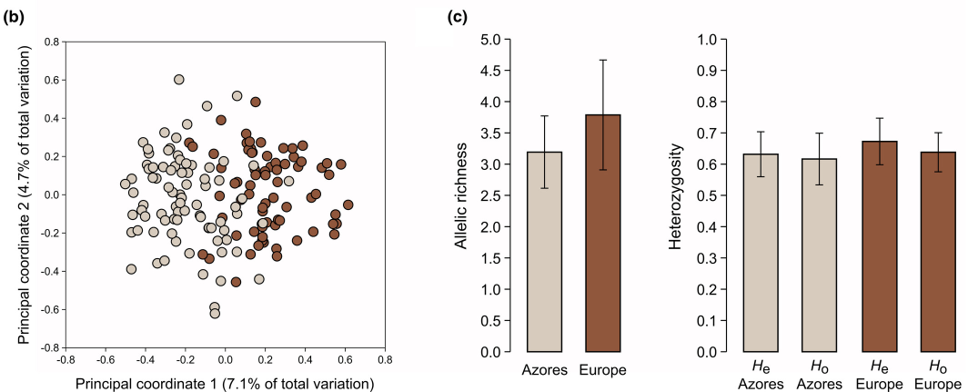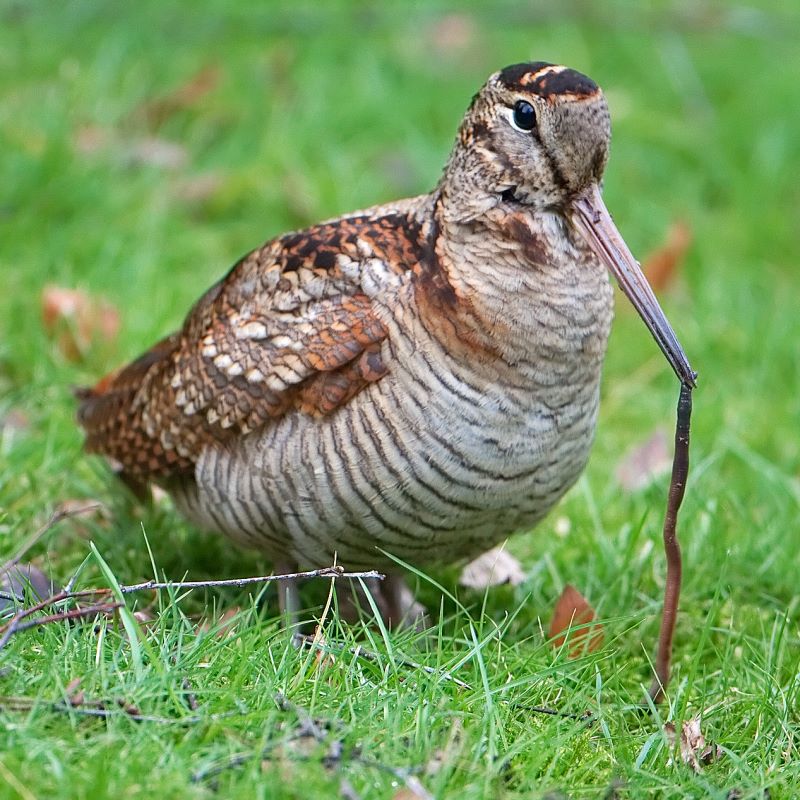 LINKED PAPER
LINKED PAPER
Genetic differentiation in Eurasian Woodcock (Scolopax rusticola) from the Azores. Andrade, P., Rodrigues, T. M., Muths, D., Afonso, S., Lopes, S., Godinho, R., Leitão, M., Ferrand, Y., Ferrand, N. & Gonçalves, D. 2021. IBIS. DOI: 10.1111/ibi.12991. VIEW
In 2005, a Eurasian Woodcock (Scolopax rusticola) was shot in France. Interestingly, this unfortunate bird was ringed on São Miguel, one of the Azorean islands (Gonçalves et al. 2006). Given that the population of Eurasian Woodcocks on the Azores is not migratory, this observation raises the question how often individuals travel between the island archipelago and mainland Europe. Was this a fluke event, or are these populations still connected by occasional gene flow? To answer this question, Pedro Andrade and his colleagues compared the genetic make-up of the Azorean Woodcocks with their mainland relatives.
Gene flow
The researchers used a set of 18 microsatellites, short genetic markers that are scattered across the genome (Ellegren 2004). The analyses revealed subtle genetic differentiation between woodcocks from the Azores and from mainland Europe (Hubisz et al. 2009). There were, however, no signs of ongoing gene flow. These patterns suggest that the Azorean population was recently founded and has remained largely isolated from other European populations. The Azorean Woodcock in France was thus a rare case of an over-water flight. It is possible that these events occur more often, but that the adventurous birds fail to reproduce. No reproduction means no gene flow.

Figure 1. The researchers documented subtle genetic differences between the Azores and mainland Europe (graph b). Measures of genetic diversity – allelic richness and heterozygosity – were not significantly smaller for the Azorean birds (graph c).
Genetic diversity
The founding of an island population generally results in a significant decrease in genetic diversity (Frankham 1997, James et al. 2016). Surprisingly, the researchers found no evidence for a genetic bottleneck on the Azores. Given the lack of recent gene flow, the steady inflow of European birds is not a likely explanation for this high level of genetic diversity. Instead, the researchers suggest that the colonization of the Azores “occurred over a relatively prolonged period, through multiple waves of immigrations that subsequently became isolated.” A more detailed look at the evolutionary history of the Azorean Woodcocks is warranted. There is much to learn about this island population. And it all started with an unlucky bird in France.
References
Ellegren, H. (2004). Microsatellites: simple sequences with complex evolution. Nature Reviews Genetics 5: 435-445. VIEW
Frankham, R. (1997). Do island populations have less genetic variation than mainland populations? Heredity 78: 311– 327. VIEW
Gonçalves, D., Ferrand, Y., Machado, A.L., Gossmann, F., Leitão, M., Jesus, A. & Pereira, C. (2006). Eurasian Woodcock ringing in Azores archipelago (Portugal). Wetlands International/IUCN – Woodcock and Snipe Specialist Group Newsletter. 32: 29– 32.
Hubisz, M.J., Falush, D., Stephens, M. & Pritchard, J.K. (2009). Inferring weak population structure with the assistance of sample group information. Molecular Ecology Resoures 9: 1322– 1332. VIEW
James, J.E., Lanfear, R. & Eyre-Walker, A. (2016). Molecular evolutionary consequences of island colonization. Genome Biology and Evolution 8: 1876– 1888. VIEW
Image credits
Top right: Eurasian Woodcock (Scolopax rusticola) | Ronald Slabke | CC BY-SA 3.0 Wikimedia Commons
Blog posts express the views of the individual author(s) and not those of the BOU.
If you want to write about your research in #theBOUblog, then please see here




